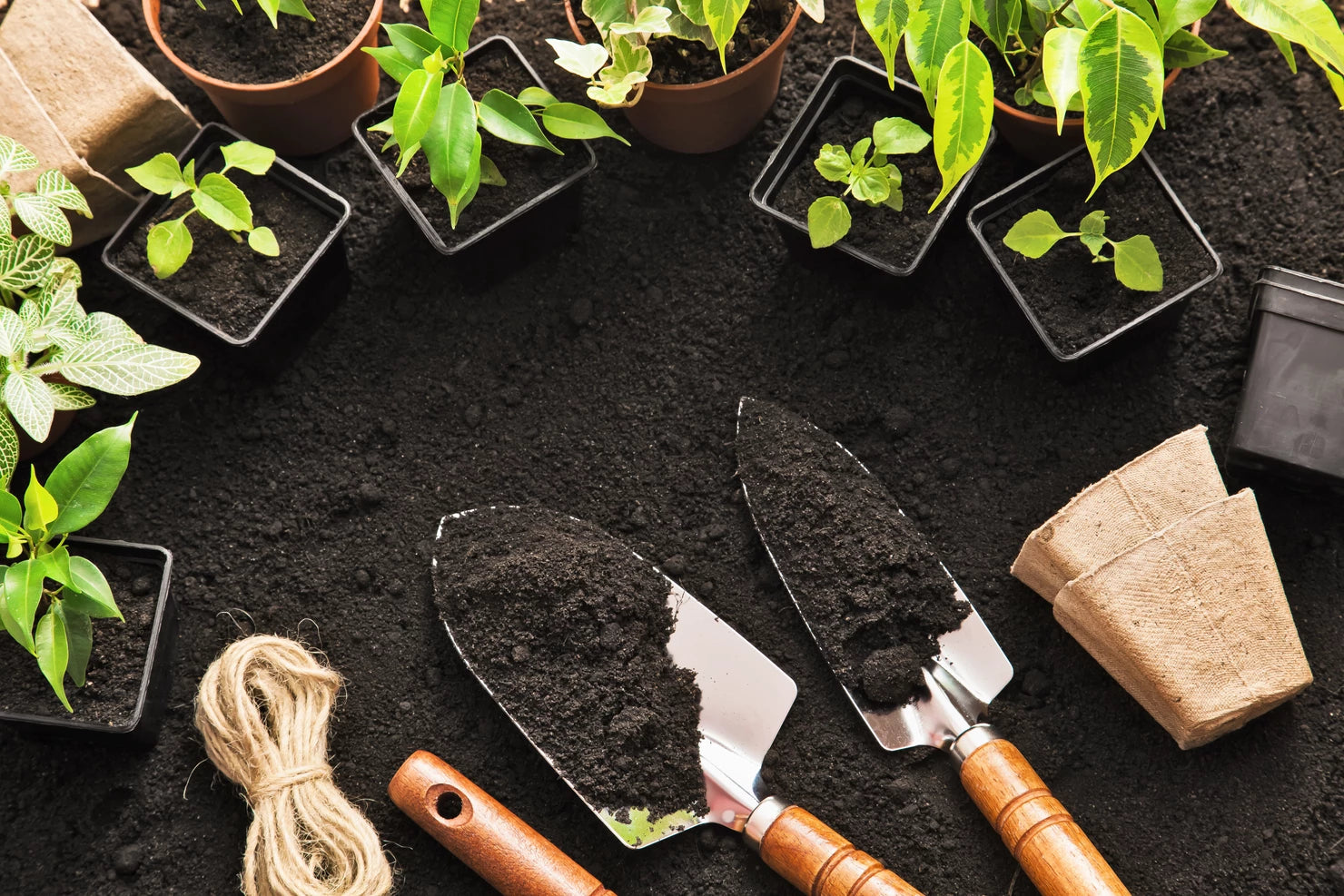Alocasia Polly is a genus of tropical plants. Their bold foliage and captivating presence make them unique. As it belongs to the Araceae family, Alocasia has a diverse array of species. Each possesses its own unique characteristics. From striking Alocasia Amazonica to beautiful Alocasia Polly. These stunning plants make any space adorable.
In this guide, you'll learn:
- Alocasia Polly Overview
- Essential care tips to your Alocasia Polly
- Tips for propagation to expand your plant collection
- How to troubleshoot common problems like yellowing leaves and root rot
- Health Benefits
Ready to bring a piece of the tropics into your home? Let's get started!
Part 1: Alocasia Polly overview: Diverse, Beautiful, and Unique

Alocasia is a diverse genus. It has various species and cultivars. Each species has its own unique features and characteristics. Some popular varieties of Alocasia include:
| Variety Name | Common Name | Notable Features |
|---|---|---|
| Alocasia amazonica | Amazonica | Dark green leaves with prominent white veins |
| Alocasia 'Bambino' | Bambino | Compact size, glossy arrow-shaped leaves |
| Alocasia reginula 'Black Velvet' | Black Velvet | Velvety dark leaves with silver-white veins |
| Alocasia 'Ivory Coast' | Ivory Coast | Large, heart-shaped leaves with creamy ivory markings |
| Alocasia amazonica 'Polly' | Polly | Compact size, glossy arrow-shaped leaves with pronounced white veins |
| Alocasia 'Silver Dragon' | Silver Dragon | Silvery-green leaves with intricate vein patterns |
| Alocasia baginda 'Dragon Scale' | Dragon Scale | Unique, textured leaves resembling dragon scales |
| Alocasia micholitziana 'Frydek' | Frydek | Velvety, emerald-green leaves with contrasting white veins |
| Alocasia micholitziana 'Frydek Variegated' | Frydek Variegated | Variegated leaves with striking patterns of green and cream |
| Alocasia micholitziana 'Velvet Elvis' | Velvet Elvis | Rich, velvet-like leaves with deep green hues |
| Alocasia 'Tiny Dancer' | Tiny Dancer | Petite size, heart-shaped leaves |
| Alocasia 'Hilo Beauty' | Hilo Beauty | Large, glossy leaves with striking variegation |
| Alocasia 'Regal Shield' | Regal Shield | Large, shield-shaped leaves with deep green color and bold veins |
| Alocasia macrorrhizos 'Stingray' | Stingray | Distinctive, long leaves shaped like a stingray |
| Alocasia zebrina | Zebrina | Elongated, arrow-shaped leaves with zebra-like striping on the stems |
Now that you know about different varieties of Alocasia plants. You might wonder why you need to grow this plant in your space. It offers numerous health benefits besides its striking beauty. Keep reading!
Part 2: Essential Care Tips for Alocasia Plants
Alocasia plants thrive in bright, indirect light and high humidity. Adequate lighting is crucial for their growth and well-being, so be sure to provide the proper conditions.
Additionally, regular misting can help maintain humidity levels, especially in drier environments.
| Care Tip | Description |
|---|---|
| Light | Bright, indirect light. Avoid direct sunlight. Use grow lights in low-light conditions. |
| Watering | Water when the top inch of soil is dry. Use room-temperature water. Avoid overwatering and underwatering. Signs of overwatering include yellowing leaves and root rot. Signs of underwatering include drooping and dry leaves. |
| Humidity | High humidity is ideal. Mist regularly, especially in dry environments. Use a humidifier or a pebble tray to increase humidity. Use a moisture meter. |
| Soil | Well-draining potting mix. A good option is a mixture of potting soil, perlite, and orchid bark. Repot every 1-2 years or when the plant becomes root-bound. |
| Fertilizer | Use a balanced liquid fertilizer (20-20-20) diluted to half strength once a month during the growing season (spring and summer). Avoid fertilizing in winter. |
| Pruning | Remove dead, damaged, or diseased leaves at the base of the stem using clean, sharp pruners. Trim spent flowers to encourage new growth. Avoid over-pruning, which can stress the plant. |
| Propagation | Propagate through root division when repotting. Carefully separate the corms and replant them in fresh potting mix. Water lightly until they establish roots. |
| Temperature | Ideal temperature range is 65-80°F (18-27°C). Avoid cold drafts and extreme temperature fluctuations. |
Read our complete guide to Understanding Plant Light Requirements.
Part 3: Propagating Your Alocasia
Alocasia plants are typically propagated through root division. And ss stem cuttings are not a viable method.
Steps on how to propagate your Alocasia:
- Choose the Right Time: The best time to propagate is during repotting, usually every 1-2 years.
- Remove the Root Ball: Carefully remove the plant from its pot and gently shake off excess soil to expose the root system.
- Separate the Corms: Identify the corms, which are the plant's growth points. Gently separate them, either by hand or using a clean knife.
- Replant the Corms: Plant each corm in a separate pot filled with fresh, well-draining potting mix. Ensure the corm is not buried too deep.
- Water Lightly: Water the newly potted corms lightly and keep them in a warm, humid location. Avoid overwatering, as this can lead to rot.
Now that you know the essentials for alocasia polly plant care. But you may face some challenges while planting it. Let’s look at the possible challenges and their solutions.
Part 4: Common Challenges and Solutions for Alocasia Polly
Alocasia Polly can face a few issues. Preventing problems is easier with proper care.
Issue 1: Leaves Curling Up
➜ Cause: Excessive direct sunlight or low humidity.
➜ Solution: Adjust the plant's position to receive indirect light and increase humidity by misting or using a humidifier.
Issue 2: Brown Spots or Droopy Stems
- ➜ Cause: Root rot, often caused by overwatering.
- ➜ Solution: Reduce watering and repot the plant in fresh, well-draining soil.
Issue 3: Yellowing Leaves and Droopy Stems
- ➜ Cause: Overwatering or underwatering.
- ➜ Solution: Adjust watering frequency and monitor soil moisture. Trim off affected leaves
Issue 4: Overwintering Your Alocasia
In winter, your Alocasia Polly may stop growing and appear droopy. This is normal due to lower light and colder temperatures. This doesn't mean your plant is dead. When exposed to cold, low light, and dry conditions, the plant might shed all its leaves and become dormant.
Reduce Watering: Water less frequently to prevent root rot.
Maintain Temperature: Keep the plant in a warm location with temperatures above 70°F (21°C).
Consider Supplemental Lighting: Use grow lights to provide additional light and encourage growth.
Read our complete guide to the Beginner's Guide to Indoor Plant Watering.
Issue 5: Pests and Diseases
Alocasia plants can be susceptible to pests like spider mites and aphids. To combat these pests:
Regular Inspection: Check your plant regularly for signs of infestation.
Natural Remedies: Use insecticidal soap or neem oil to treat infestations.
Isolation: If a plant is severely infected, isolate it from other plants to prevent the spread of pests.
Part 5. Health Benefits of Alocasia Plants
Alocasia Plant offers numerous health benefits. Some of these are as follows:
1. Air Purification
Alocasia plants serve as natural air purifiers. It helps purify indoor air. It absorbs toxins like benzene and formaldehyde with its large leaves.
It also helps eliminate harmful chemicals from the air. Moreover, it releases fresh air. This way, they help create a cleaner atmosphere.
The best thing? The Alocasia plant can remove up to 87% of air pollutants within 24 hours. That’s why it is beneficial for those with respiratory issues or allergies. It lets them breathe easily in purified air.
Plus, it removes airborne mold spores and bacteria. Hence, it makes your place cleaner.
2. Stress Relief
We are in a world where stress is badly affecting our health. So, it is vital to find ways to relieve stress. Having Alocasia in your space helps reduce stress. The lush greenery promotes relaxation and calm. Caring for the plant can be stress-relieving. It offers a sense of purpose.
Research shows plants lower blood pressure and heart rate. Thus making the environment feel more peaceful. Just looking at the plant or tending to it can help you feel more at ease, creating a soothing atmosphere.
3. Humidity Regulation
The ideal humidity level in your indoor space should be between 40-60%. Alocasia plants act as natural humidifiers as they help maintain this level naturally. They release moisture into the air through transpiration. Hence, it reduces dryness in your home.
Moreover, it helps reduce dry skin, nasal congestion, and respiratory issues. Alocasia keeps air comfortable, reducing the need for electric humidifiers. This creates a healthier indoor environment, especially in dry conditions.
Want to Bring Alocasia Polly's Stunning Charm to Your Home?
Explore the products mentioned in this blog!
- High-quality potting mix
- Planters and pots
- Moisture Meter and gardening toolkit
- Natural Balanced Fertilizer
- BIOS Ultimate Pesticide
Conclusion
Caring for an Alocasia plant needs careful attention and regular upkeep. Proper light, consistent watering, and the right nutrients are vital. All this will help your Alocasia grow strong and stay beautiful in your home.
If you need any help, please reach out and contact us.
Frequently Asked Questions on Alocasia Polly:
1. Is Alocasia Polly a difficult plant?
The Alocasia Polly or Elephant Ear or African Mask is difficult for beginners to care for. The plant needs a warm and humid environment. It also prefers consistent moisture and bright, indirect light. It is more sensitive to temperature fluctuations and drafts. So it requires a bit more attention. With the proper care, it can grow well and add a striking touch to your home.
2. How big does Alocasia Polly get?
Alocasia Polly grows to one to two feet. Its large and arrow-shaped leaves can grow up to 12 to 18 inches in diameter. Best thing? It is easy to grow indoors for its compact size. The plant needs space to spread its beautiful foliage.
3. Does Alocasia Polly like to dry out?
No! Alocasia Polly does not like being wet. However, it enjoys continuously moist soil. It's vital to keep the soil evenly moist between waterings. But avoid letting it dry out completely. Avoid Overwatering or leaving the plant in standing water. It can cause root rot. Ensure the soil drains well. It will keep the roots from sitting in excess moisture.
4. Does Alocasia Polly like to be rootbound?
No! Alocasia Polly doesn't like to be rootbound. It flourishes when repotted every one to two years. However, it can survive in a slightly tight pot, particularly if its roots overrun the container. A larger pot enables the plant to grow vigorously and promotes healthy root development. Plus, repotting allows you to ensure the drainage is enough and refresh the soil.










